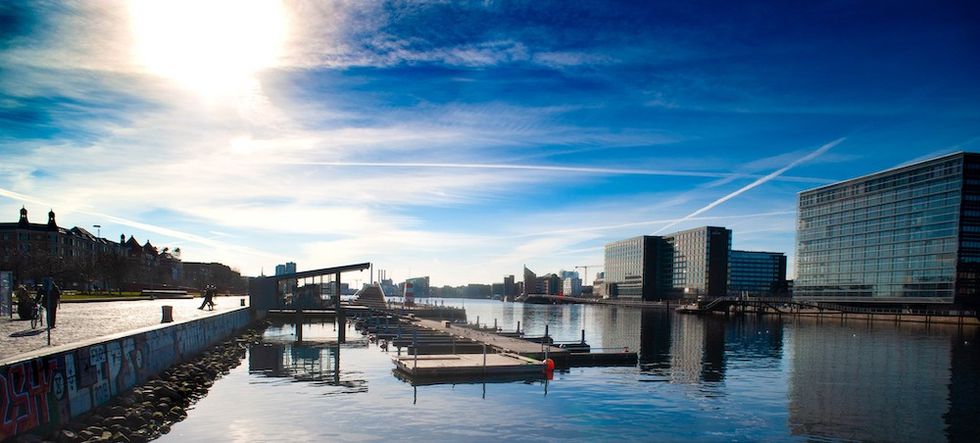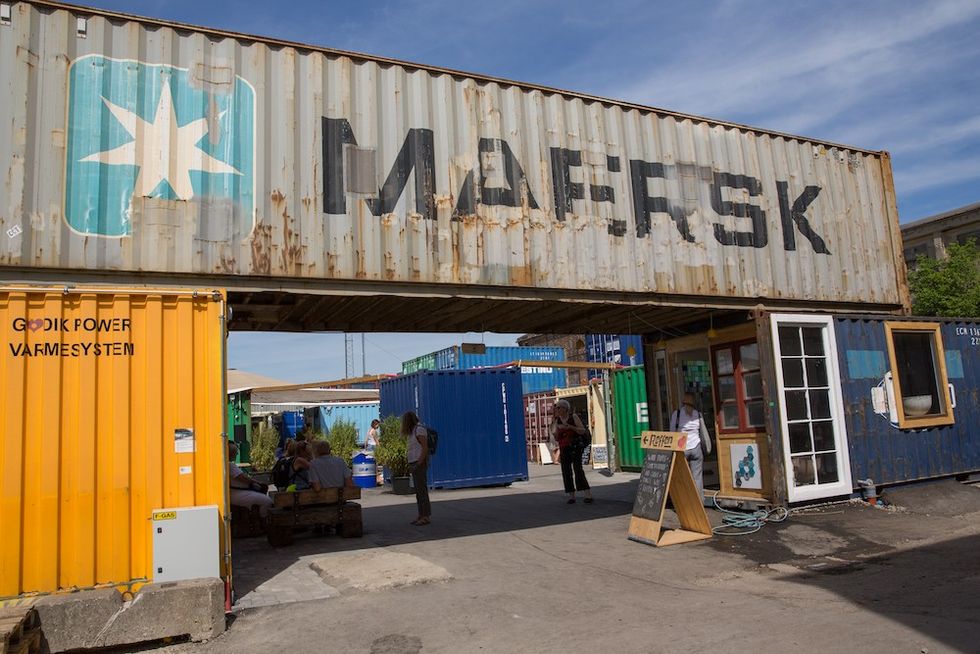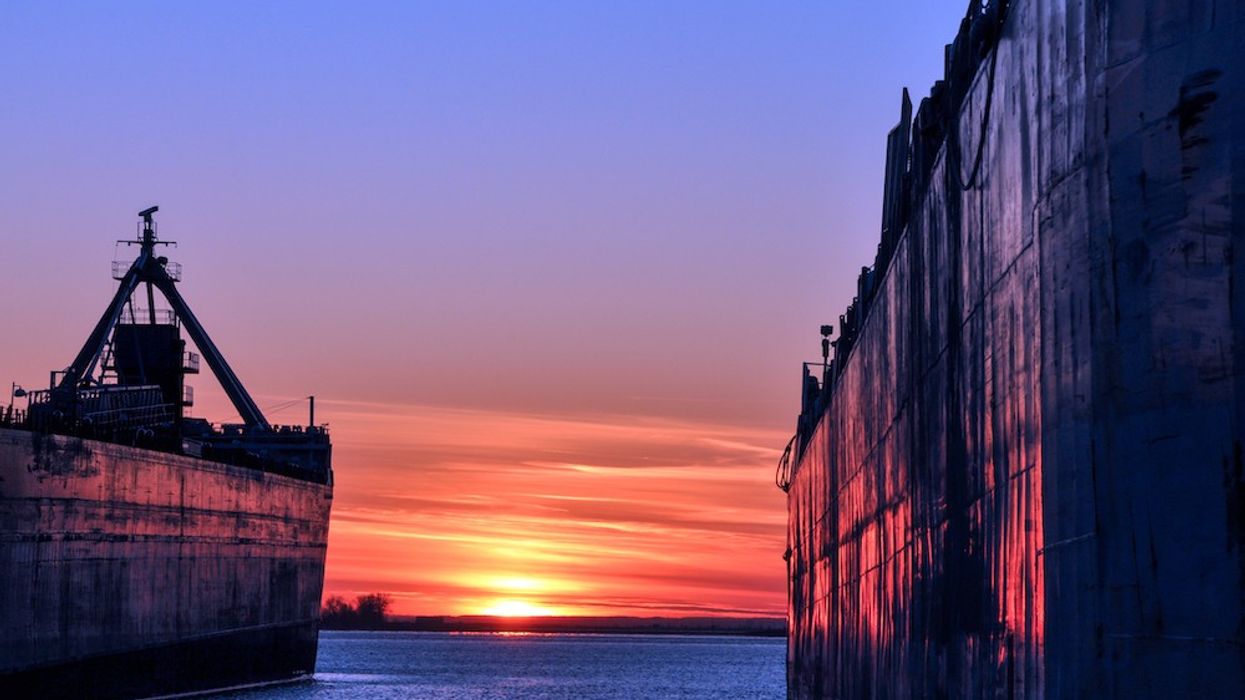Former industrial ports often represent the final expanse of underutilized lands in urban settings; once responsible for the economic growth of cities, these lands became abandoned by the digital age. Their redevelopment requires impeccable foresight to reimagine expansive areas, often mired by environmental misuse, as new spaces that connect both geographically and culturally to established cities. The revitalization of Toronto’s 2,000-acre waterfront, an ongoing process of over 20 years, is no exception.
Waterfront Toronto seeks to be a precedent-setting project that moves beyond the status quo, aiming to deliver a landmark destination that features inclusive community spaces, innovations in sustainability, world class architecture, bike lanes, promenades, and copious amounts of open and forested green space. The transformation of the port lands, which includes the naturalization of the Don River mouth and new hefty flood protection measures, is one of Canada’s largest ever infrastructure initiatives that will unlock 290 hectares of land for development and green space.
READ: New Cherry Street Redevelopment Plan Could Include an Urban Marsh
As the public and private sectors collaborate to distill higher-level visions into a cohesive network of neighbourhoods and public spaces, an observation of successful waterfronts internationally is worthwhile. Redeveloped waterfronts, like those in Denmark, Norway, and Sweden, are often regarded as the highlight of their cities by residents and tourists alike. These Scandinavian countries offer meaningful direction as locations with celebrated waterfronts that experience comparable weather to Toronto.
Year-Round Enjoyment
Ensuring that the public spaces are not just accessible all year, but enjoyable too, can have a significant impact on both the mental and physical health of residents through activities that encourage movement and combat winter isolation.
Denmark’s Aalborg waterfront, once the country’s second-largest industrial town, has made convertible outdoor space a key part of its master plan. The area’s central activities field, for example, was built to accommodate various games and sports, from beach volleyball in the summer to ice skating in the winter.
Swimming in the fresh water of Toronto’s lakeshore is generally not recommended, making a close emulation of Copenhagen’s famous Harbour Baths difficult. Copenhagen also embraces winter on “the Lakes,” or Søerne, where skating and other ice sports spill onto the frozen water to replace the rentable boats available in warmer seasons.

Toronto’s dramatically contrasting seasons may be viewed as a challenge, but these examples highlight how such weather is also an opportunity to add excitement to the waterfront by showcasing versatile public spaces that shift with changing weather patterns.
Preserving Industrial History
Several former industrial waterfront redevelopments in Scandinavia incorporate elements of their respective industrial pasts to foster visual interest and education. Incorporating unique historical elements of Toronto’s waterfront would distinguish it from the rest of the city and contribute to its status as a local and global lakeside destination.
The redevelopment of the Gothenburg port lands, which unites seven city districts along the Swedish waterfront, includes the preservation of an old gantry crane called Eriksbergskranen. This unique relic of the city’s widescale shipping industry holds a strong visual impact, adding a significant cultural and historical landmark to the new Swedish waterfront.
Refshaleøen, a former industrial district in Copenhagen preserves a rugged industrial atmosphere by repurposing shipping containers along the waterfront, a stylish and eco-friendly practice that is already common in some areas of Toronto. Another Danish public waterfront park, Havneparken, has creatively converted an abandoned railway car into an exhibition space and an old ship hull into a bandstand by rotating it upside-down.

In Stranden, a redeveloped waterfront promenade in Oslo, a signature color inspired by the area’s maritime history ties this past to its present-day placemaking. The recognizable orange hue can be seen coloring street furniture, elements of building façades, and wayfinding towers that provide historical insights to visitors.
Mixing Public Spaces and Commercial Uses
Not every public space on the waterfront must be integrated with commercial uses, of course, but interesting retail is a key to attracting people to an area and ensuring vibrancy. The lack of areas with continuous retail in some of the City of Toronto’s previous (and now discarded) plans for the waterfront was a significant oversight.
In Copenhagen, outdoor cafes and food kiosks are used to animate public spaces year-round, offering the perfect treat for the day’s weather. Restaurants on most Scandinavian waterfronts offer outdoor oceanside seating for visitors to take in the view, but abundant street furniture is usually present too for those who prefer take-out. Bjørvika Barcode, a district adjacent to the prominent Oslo Opera House, is a strong example of how mixed-use development adds liveliness, functionality, and shelter from the elements for those visiting or living on the waterfront.
Varied Car-Free Mobility Options
The City of Toronto has made commitments to reduce car use and the waterfront is an opportunity to show how well pedestrian-focused mobility can function while aligning with the project’s ambitious sustainability goals.
The Swedish district of Hammarby Sjöstad, Stockholm set a goal that 80% of all trips made to and from the district be car-free. Planners recognized that achieving this was dependent on integrating a good transportation system into the redevelopment plan. Early studies prior to the site’s 2018 completion found that one-third of all trips between Hammarby Sjöstad and the city centre were already being done on a new tram line constructed as part of the redevelopment and two-thirds of all trips within the 200-acre district were by public transport, bicycle, or walking.
Copenhagen is well-known as a biking utopia and its waterfront lives up to the title by providing cyclists with their very own Cycelslangen, or Cycle Snake, an elevated bike lane designed exclusively for cyclists. Beyond that, the waterfront provides plenty of shared walking and cycling infrastructure that make cars the least common form of transportation.
Oslo, Norway’s capital city, is reportedly experiencing record levels of cycling, which city planners attribute to the intentional lack of car parking space in their recently redeveloped waterfront district.
Let’s Build an Inclusive, Accessible World-Class Waterfront
Large amounts of time and money are being expended to transform Toronto’s raw waterfront port and shape the city’s trajectory for decades to come, so we need to get this right. Looking at the achievements of these Scandinavian cities will help set the area’s urban designers and planners up for success.





















